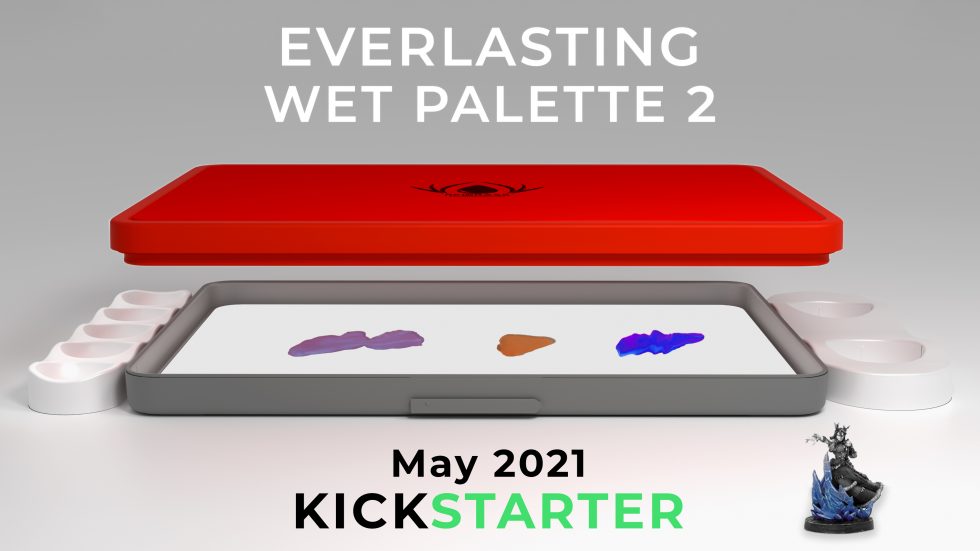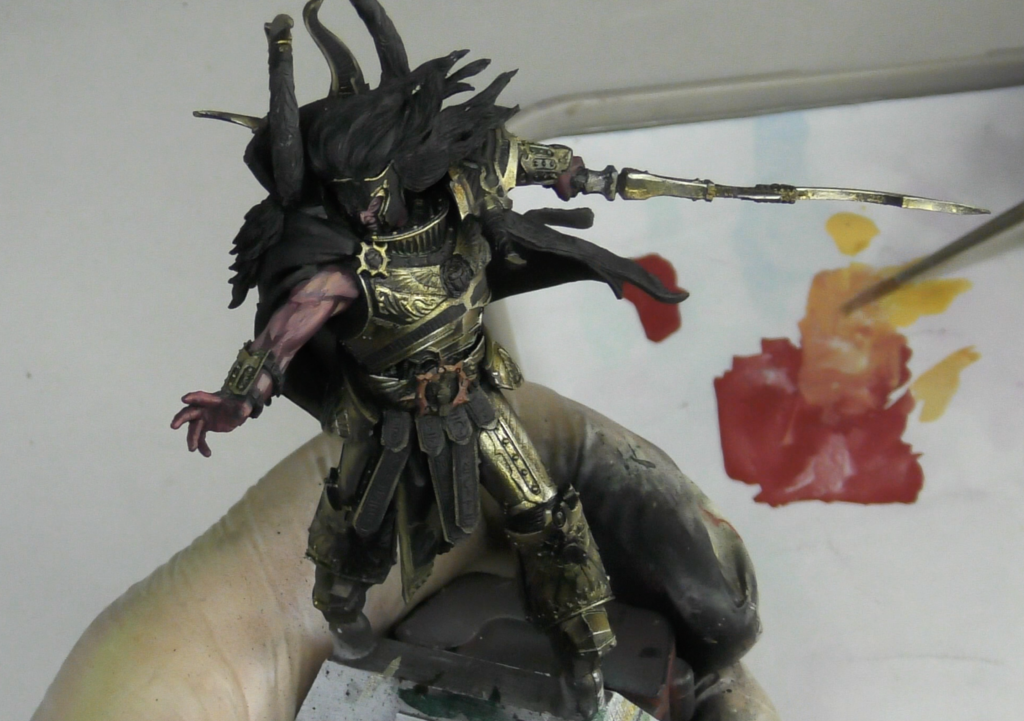
Evolution or gimmick? That’s the tension whenever a new hobby product hits the market. It’s flattering to be sent materials like this from a company to review, and in a small way, you feel a level of legitimacy within a silly hobby painting toys. We’ve seen a greater degree of sophistication when advertising toward the painting community. There’s a dizzying array of Kickstarters, campaigns, advertisements, and endorsements for products that range from the sublime to the underwhelming.
So where does this new paper sit on the spectrum? Well, let’s test it to destruction.
The first question you should address. Do I need a wet palette? Do I even like them as a concept?
A wet palette aims to prolong the working life of acrylic paint and help aid the preferred consistency of paint. Glazes don’t dry within seconds and paint recipes can be used over the course of a week instead of a single session. The first time I saw this used was by Roman Lappat from Massive Voodoo and I made many attempts to create my own.
I had the same conversation you’ve had with yourself. Why should I buy a wet palette when I can make my own? Works the same. I had the perfect setup with a Ferrero Rocher case lined with the yellow sponge and parchment paper from Morrisons. Perfect. Until the supermarket changed the parchment paper to baking paper and manufactured it differently.
Frustrated with the changeable quality of papers I decided to bite the bullet and just buy a damn wet palette from Redgrass games.
And that was it. I couldn’t go back. Consistency, reliability, and easily refillable paper sheets wrapped up in a lovely hard case parcel.
Generation 2.

Reviewers have only been sent the second generation of paper, not the hardshell case. I’m not sure if the new case will enhance the performance of the new paper more, but my hope for this is to mitigate, or outright avoid the most common issue with the current generation.
Paint blow out.
Paint is usable for longer because the paper allows the transfer of moisture through its membrane from the sponge to the paint. However, this does mean the paint gets oversaturated with water. It’s annoying to mix the paint up and achieve a thicker consistency again.
So what are the main differences between this paper and the last? Well, functionally, Redgrass Games claims that you can use the paper 3 times. You can rinse it off, and slap it back into your palette and go again. The new case also boasts a better clasp system with more functional additions such as paint pot holders and a dry palette.
The paper is used in exactly the same way. Add water to the sponge until there are no lighter spots, allowing for a small reservoir of water surrounding the lip. The side with the writing is placed down onto the sponge, with the satin finish side face up to receive the paint.
Some staining might occur to the paper when using heavy body pigment paints such as Kimera, but the leaflet does say there will be no lack of functionality. I test the sheet with a range of colours from Scale 75, Kimera, Vallejo, Formula P3 and Games Workshop.


First Impressions
The paper itself feels different. It’s thicker and has a shiny coat on one side. The paint slips across its surface with zip. It feels like using a tile and this glide is missing from version 1. Thinned paints feel more responsive, and glazes hold their structure for much, much longer. Version 1 has greater paint absorption, so glazes often dry out much easier than thicker paint, even on a wet palette. The satin finish helps reinvigorate paint over longer sessions. I was able to reactivate a glaze made at the start of the week with a little water, ready to be used again without appreciable loss in performance.

This photo was taken on the second day of use. There was a little paint blowout. However, the paint didn’t feel oily when remixed and kept its tension far better. The paint was reactivated easily with no loss of movement across its surface.
The satin finish of the paper also meant paint slipped off without issue beneath running water when cleaned. I didn’t need to scrub the paper as I feared and it felt sturdy enough to withstand multiple cleanings. This paper was allowed to dry out overnight, as recommended, before trying it again.
The paper didn’t seem to have lost any of its original properties. Paint moved across its surface with ease and paint manipulation felt responsive. There was very little difference between the original sheet, and the new washed one.

I kept the same sheet over the course of a week painting this rather spiffy chap. You can find this and other works via instagram.
Ok, the first test worked. Now let’s put it through its paces.
The Magnus and Russ diorama was painted using the new paper. Maintaining a coherent palette for such a complex project, for such a long time helped a lot.


This is the cleaned sheet after 4 sessions. It’s wrinkled, a little worst for wear, but still kept paint usable for a couple of days. Even with heavy body pigment, staining wasn’t an issue and I felt could have gone another round, with another project.

The question we posed ourselves at the start – evolution or gimmick? Is this product really better than the previous sheet, and is it better than homemade?
The improvements to the sheet are substantive enough to warrant the upgrade. These are not minor changes, not just tweaks to a formula. This new sheet feels significantly different from the previous, offering more versatility to the working life of your paints. Not only will it keep your paints usable for longer, to a higher degree of performance, but it will do so 3 times easily with proper care.
The verdict. It’s good. It’s really good. It is a meaningful change that tangibly improves the performance of the wet palette. The new case is intriguing, and if it’s anything like the step up the paper is, it will be an indispensable tool for any miniature painter.




